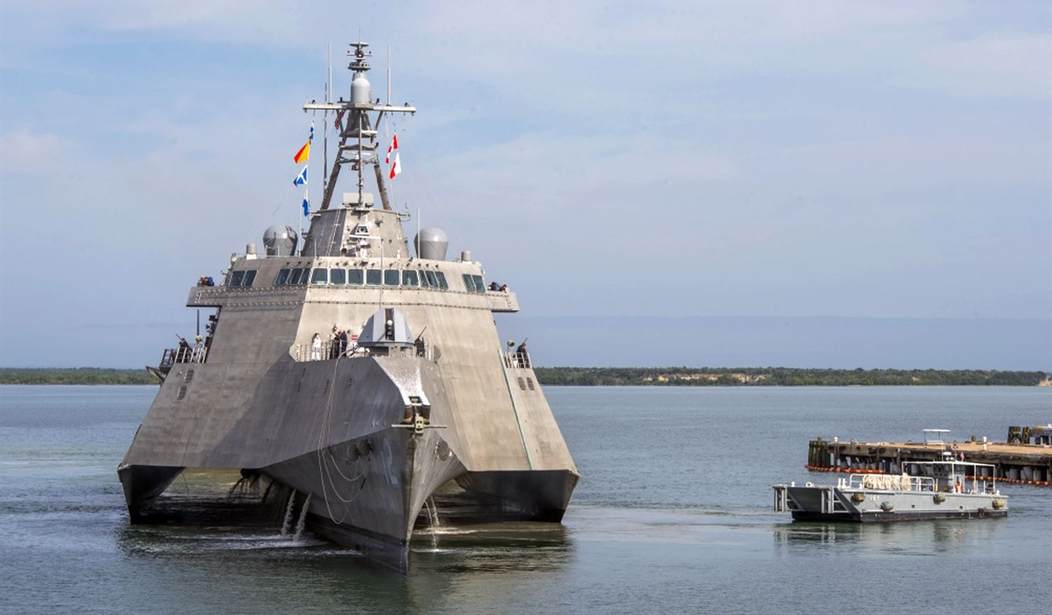Defense acquisition takes a lot of flak, most of it entirely deserved.
The services, being at heart big government bureaucracies, compete with each other for resources, capabilities and influence – impact on overall spending be damned. They could not survive an audit, and billions of dollars seem to slip into the ether each year.
They protect their interests, try not to let any funding already acquired not be used to its fullest and jealously guard their turf.
But every once in a while, the services do it right. They see a program that doesn’t measure up, and they make the tough decision to get rid of it. They forgo a capability, opt for efficiency and call for going back to the drawing board.
The Navy has made this difficult decision with the Freedom Class Littoral Combat Ship. These are small and fast ships – they can go up to 50 miles per hour – designed to operate in shallow water near shorelines against asymmetric threats such as the gun boats used by Iran.
But the ships have never worked as planned. It took 12 years longer than expected to produce the first ships, and they came in at more than $500 million per unit – more than twice their estimated cost of $220 million. Navy officers referred to them as the “Little Crappy Ship,” because they did not live up to the expectations of the rank-and-file who had to use them.
They were made with less extensive protective armor than typical ships, which enabled them to travel lighter but left them more vulnerable to anti-ship missiles or mines, which they could well encounter in a battle with an adversary. Their ability to reach top speeds rendered them “gas hogs,” which limited their range and effectiveness.
The maiden voyage of the new class – the U.S.S. Little Rock heading off to Central and South America to help combat drug trafficking and other illegal activity – hinted at the dysfunction ahead. The ship’s diesel generators malfunctioned as the ship approached the Panama Canal. It lost power briefly. Because it was designed to travel light, it did not have an extensive repair crew or materials on board.
Recommended
So the captain returned to Guantanamo Bay in Cuba, where the ship sat for a month before it was repaired.
Then there were problems with the ship’s radar system that prevented it from training its guns or detecting airborne threats. The Navy brought in a repair team from Germany, but the fix proved so complex the ship had to return to its home port of Jacksonville, Fla.
Then, as it began its return trip to Jacksonville, the ship’s commanders discovered that the high-speed clutch bearings that enabled its 50-mile-per-hour top speed had broken into tiny bits that were inside the oil.
Finally, the Navy discovered that the sonar system developed especially for these ships didn’t work, and the engines were so loud that it couldn’t detect enemy submarines or torpedoes – the very purpose of these ships. Without that capability, the Navy gave up and announced it was retiring nine of the 10 ships it had deployed, even though they averaged only 4 years old and were designed to last 25 years.
What we’ve had since is a lesson in why these wasteful programs never seem to end.
The folks at the Mayport Naval Station heard about this rare use of the efficiency muscle and moved quickly to return it to its usual atrophied state. A consortium of companies that had just won a $1.3 billion Pentagon contract to repair the ships got together with city leaders and others in Jacksonville to preserve the program and what leaders said was about 2,000 jobs connected to it.
They turned to Congress and went to work to save the program. There was a fly-in of local stakeholders to Washington to lobby Congress. Hundreds of thousands of dollars of campaign contributions rolled in. Within weeks, lawmakers offered amendments to the Pentagon’s annual spending law that prohibited the Navy from retiring five of the ships.
So half the original fleet survived, and others are in the pipeline. The Navy has made some progress with a similar class of ships, which makes lawmakers think these can work as well.
But for once the Navy did the right thing on procurement. It spotted a ship that wasn’t worth it and moved to eliminate it. But politics won out. If we continue to let defense contractors dictate procurement policy, this will continue to be the result.




















Join the conversation as a VIP Member